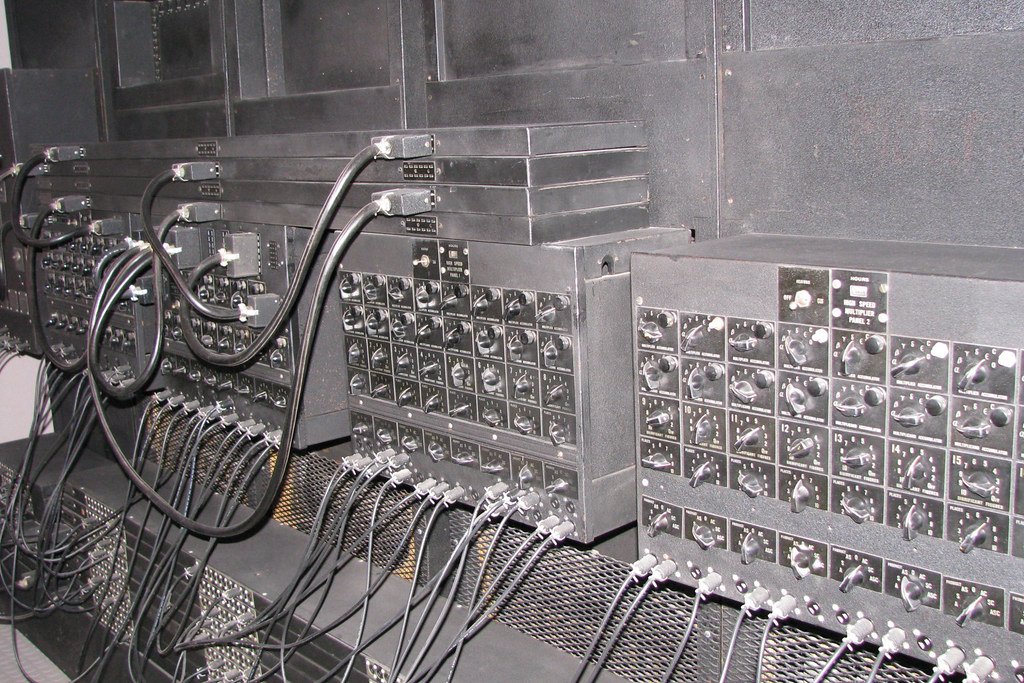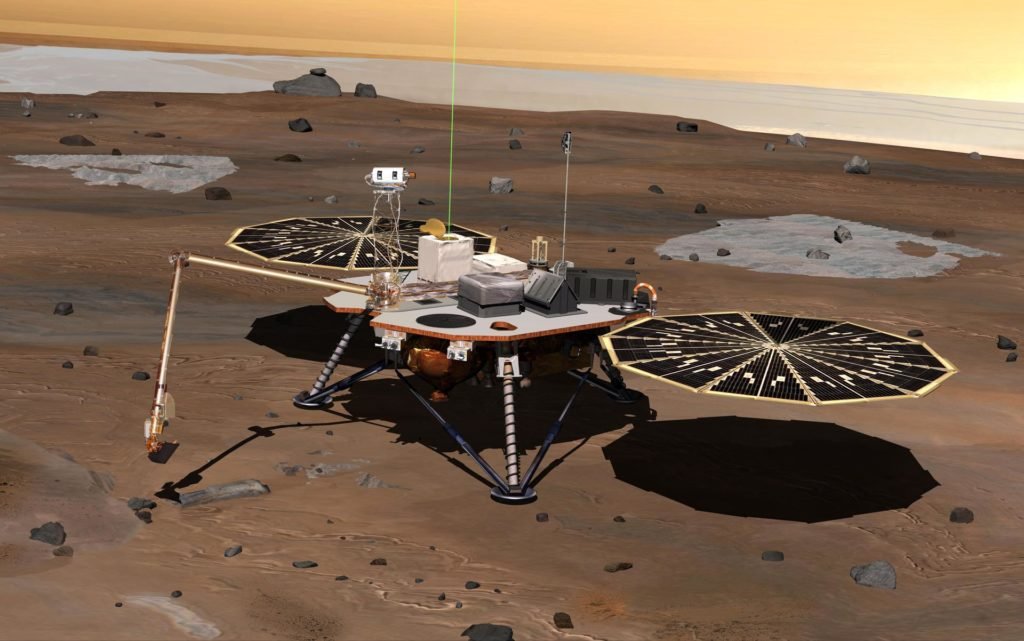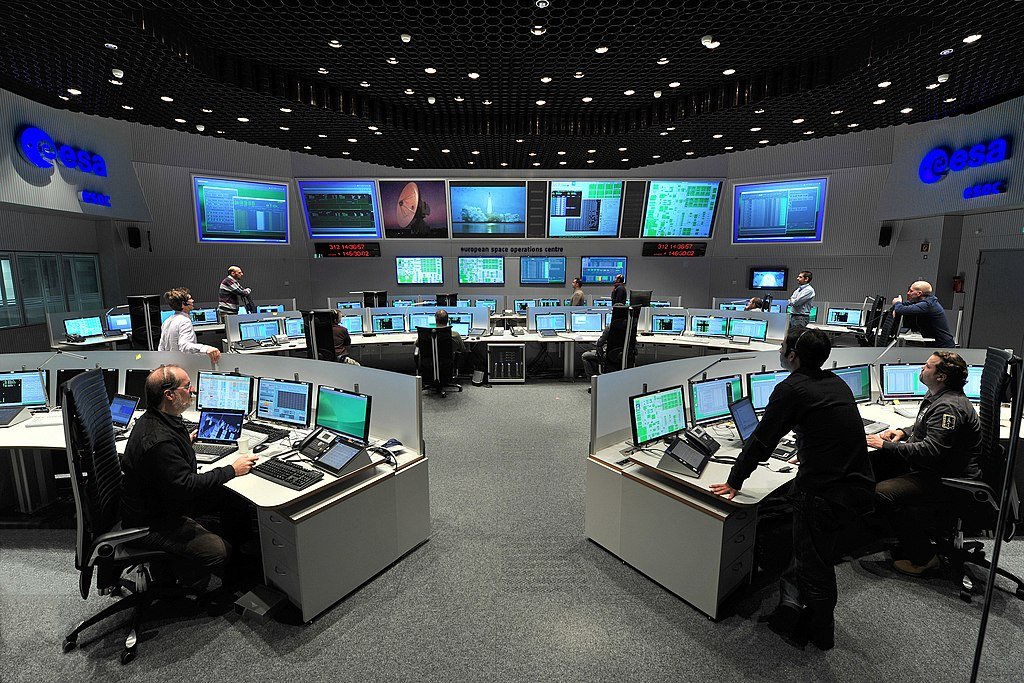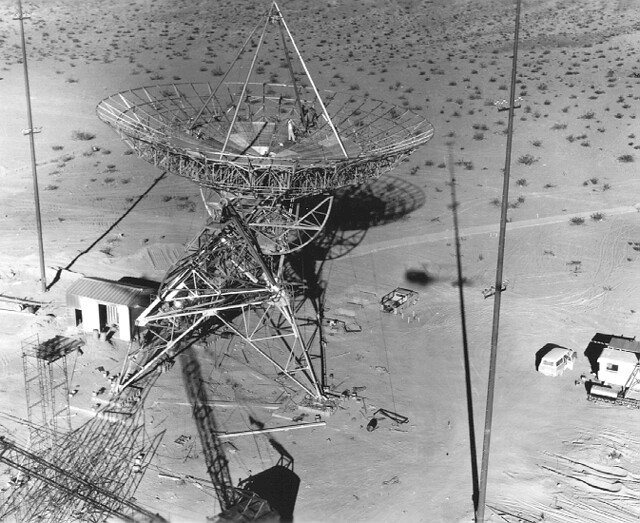The exploration of Mars has been a testament to humanity’s insatiable curiosity and technological prowess. Among the remarkable missions that have graced the Martian surface, the Opportunity Lander stands as a beacon of scientific achievement. Launched by NASA as part of the Mars Exploration Rover mission, Opportunity touched down on the Red Planet on January 25, 2004, with the primary mission of unraveling the mysteries of Mars’ geological history and potential past water activity.
Situated in the Meridiani Planum region, Opportunity’s landing site was strategically chosen for its geological significance, harboring the promise of revealing clues about Mars’ ancient environmental conditions. Equipped with a suite of scientific instruments, the rover embarked on an incredible journey of discovery that would far surpass its initially planned 90-sol mission duration.
The Opportunity Lander’s findings were nothing short of groundbreaking. One of its primary achievements was the identification of compelling signs of past water activity on Mars. Through a meticulous analysis of rocks and soil, the rover unearthed evidence pointing towards the existence of ancient salty, acidic water. The presence of sulfate-rich deposits provided valuable insights into the geological evolution of the Martian landscape, suggesting that Mars was once a planet with conditions suitable for ancient microbial life.
As Opportunity traversed the Martian terrain, it encountered diverse geological features, including the famous Eagle Crater, where it first landed. The rover’s longevity exceeded all expectations, operating for over 14 years until a massive dust storm in 2018 led to the loss of contact. Despite engineering challenges such as dust accumulation on its solar panels and a broken wheel, Opportunity persevered, leaving an indelible mark on our understanding of Mars.
This introduction sets the stage for a journey into the incredible scientific contributions of the Opportunity Lander, showcasing its pivotal role in expanding our knowledge of Mars’ history and its potential to harbor conditions conducive to life.
Table of Contents
What did the Mars lander discover?
One of the notable landers was the InSight lander, which touched down on Mars in November 2018. InSight’s primary mission was to study the interior of Mars, including its seismic activity and heat flow.
InSight carried instruments such as the Seismic Experiment for Interior Structure (SEIS) and the Heat Flow and Physical Properties Package (HP3). SEIS detected marsquakes, providing valuable insights into the planet’s internal structure, while HP3 aimed to measure the heat escaping from the planet’s interior.
Another notable mission was the Perseverance rover, which landed on Mars in February 2021. Perseverance’s main objectives include searching for signs of past microbial life, collecting rock and soil samples for possible return to Earth, and testing technology for future human missions.
For the latest and most specific information on Mars lander discoveries, I recommend checking official NASA or relevant space agency updates.

Is Opportunity still working on Mars?
Opportunity is no longer operational on Mars. The rover, part of NASA’s Mars Exploration Rover mission, exceeded its designed mission duration of 90 sols (Martian days) by a substantial margin but stopped communicating with Earth in June 2018. The cessation of communication was primarily due to a massive dust storm that engulfed Mars, blocking sunlight and hindering Opportunity’s solar panels from generating power.
Despite its official mission ending, Opportunity’s remarkable longevity and scientific contributions are noteworthy. The rover’s discoveries include evidence of past water activity, identification of sulfate-rich deposits indicating ancient salty water, and the recognition of small spherical formations known as “blueberries,” which were determined to be hematite concretions. Opportunity’s findings significantly contributed to our understanding of Mars’ geological history and the potential for past habitable conditions.
For the latest updates on Mars missions and rovers, it is advisable to check NASA’s official announcements and mission status reports.
Is Spirit still alive on Mars?
The Spirit rover is not operational on Mars. Spirit was one of NASA’s Mars Exploration Rovers, alongside its twin, Opportunity. Spirit landed on Mars on January 4, 2004, with a primary mission duration of 90 sols (Martian days).
Spirit’s mission exceeded expectations, operating for over six years until communication was lost in March 2010. The rover became stuck in soft Martian soil, hindering its mobility. Despite losing contact, Spirit’s contributions to Mars exploration were significant. It made valuable discoveries about the planet’s geological history and evidence of past water activity.
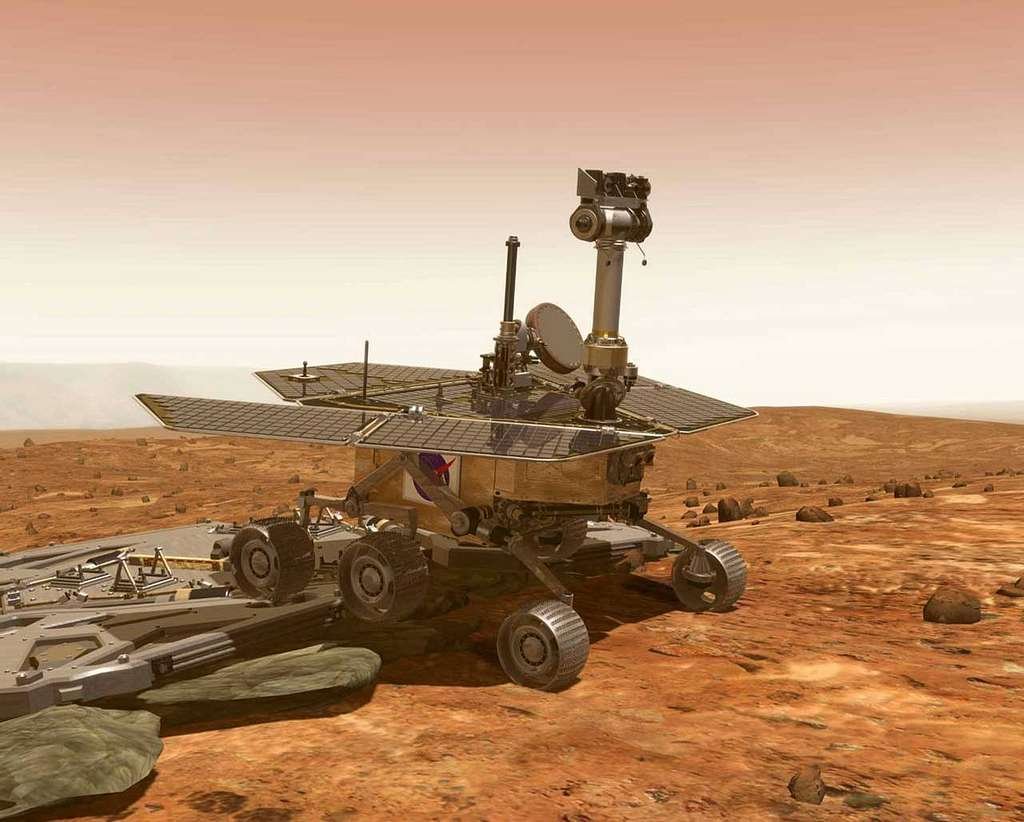
While Spirit is no longer operational, its twin, Opportunity, continued its mission until June 2018, when a massive dust storm on Mars led to a loss of communication. Both rovers greatly surpassed their initial mission timelines, providing valuable data and insights into the Martian landscape. As of now, NASA’s more recent Mars rovers, such as Curiosity and Perseverance, continue to explore the Red Planet.
The opportunity Lander and its finding on Mars
Opportunity was one of NASA’s Mars Exploration Rovers, along with its twin, Spirit. The rover landed on Mars on January 25, 2004, with the primary mission to explore the planet’s surface, study its geology, and search for signs of past water activity. Here are some key details about the Opportunity rover:
Landing Site
Opportunity, a NASA Mars Exploration Rover, touched down on the Martian surface in the Meridiani Planum region on January 25, 2004. The chosen landing site was strategically located at the Eagle crater, a small impact crater approximately 22 meters (72 feet) in diameter. This region was selected due to orbital observations indicating the presence of layered rock formations, suggesting potential evidence of past water activity.
The Eagle crater, with its exposed outcrops of bedrock, provided a unique opportunity for Opportunity to conduct detailed geological investigations. The rover’s initial tasks included analyzing the composition of rocks and soil, taking panoramic images of the surrounding terrain, and utilizing its rock abrasion tool to expose fresh surfaces for closer examination.
The Meridiani Planum proved to be a scientifically rich area, and Opportunity’s extended mission duration allowed for extensive exploration beyond the initial landing site. The rover’s findings in this region, including compelling evidence of past water-related processes and mineral formations, significantly contributed to our understanding of Mars’ geological history and its potential for supporting ancient microbial life. The successful mission at Eagle Crater set the stage for Opportunity’s remarkable journey of discovery on the Red Planet.
Mission Objectives
The Opportunity rover, part of NASA’s Mars Exploration Rover mission, embarked on its Martian journey with the primary objective of unraveling the mysteries of the Red Planet’s geological history and searching for evidence of past water activity. Touching down on Mars in January 2004, Opportunity’s mission was to thoroughly investigate rocks and soil in its landing region, particularly in the Meridiani Planum area.
Equipped with a suite of advanced scientific instruments, Opportunity was designed to analyze the mineral composition of rocks, providing crucial insights into the geological processes that shaped the Martian surface. The rover’s capabilities extended to capturing microscopic images, allowing scientists on Earth to scrutinize fine details and structures at the microscopic level. Moreover, Opportunity featured a rock abrasion tool, enabling it to grind away the outer layers of rocks and expose fresh surfaces for in-depth examination.
Throughout its remarkable journey, Opportunity’s findings significantly contributed to our understanding of Mars’ ancient environmental conditions, revealing compelling evidence of past water-related activities. The rover’s prolonged operational period, surpassing its initial mission duration, exemplified its resilience and the success of the mission in advancing our knowledge of the Red Planet’s history and potential habitability.
Duration of Mars Lander
Both Spirit and Opportunity, NASA’s Mars Exploration Rovers, were designed for a 90-sol mission on Mars. Both surpassed their expected operational lifetimes. Opportunity, in particular, defied expectations by operating for over 14 years on the Martian surface. Launched in 2003, Opportunity landed on Mars in January 2004 with a primary mission to explore the planet’s geology and search for signs of past water activity.
Opportunity’s longevity allowed it to make numerous groundbreaking discoveries, including evidence of ancient water in the form of mineral deposits and the identification of hematite-rich “blueberries” in the soil. These findings provided crucial insights into Mars’ geological history and the potential habitability of its past environments.
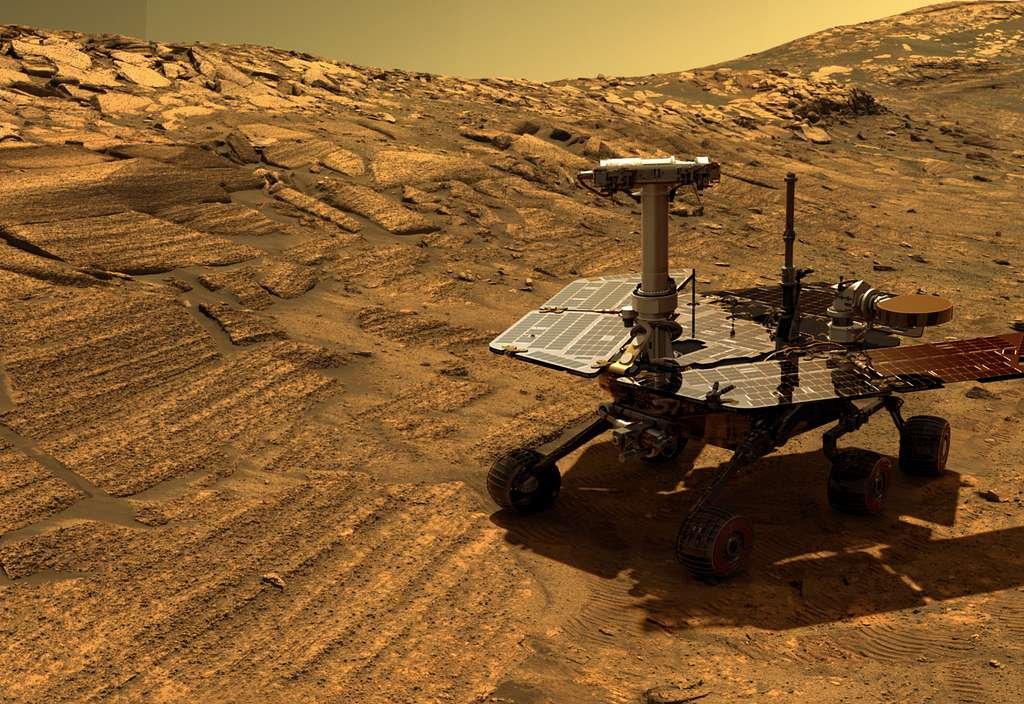
However, Opportunity’s remarkable journey came to an end in June 2018 when a massive dust storm enveloped the planet. The storm led to a dramatic reduction in solar power, eventually causing the rover to lose contact with Earth. Despite the mission’s conclusion, the data gathered by Opportunity significantly expanded our understanding of Mars. They paved the way for subsequent missions, such as Curiosity and Perseverance, in ongoing efforts to explore the Red Planet.
Discoveries
Opportunity, a stalwart Mars rover, embarked on a mission to uncover the mysteries of the Red Planet’s geological history and potential for past habitability. One of its groundbreaking discoveries was the identification of compelling evidence pointing to the existence of ancient water on Mars. The rover examined mineral deposits, notably sulfate-rich formations, providing crucial insights into the planet’s aqueous history. The presence of these deposits strongly indicated that Mars had once hosted salty, acidic water, creating conditions suitable for various geological and potentially biological processes.
Furthermore, Opportunity’s keen observations extended to the Martian soil, where it encountered enigmatic small, round objects colloquially referred to as “blueberries.” Through meticulous analysis, scientists determined that these spherules were concretions composed predominantly of hematite, an iron oxide mineral. The blueberries held valuable clues about the past environmental conditions on Mars, offering evidence of mineral precipitation in the presence of water. This revelation significantly contributed to our understanding of the planet’s geological evolution and the dynamic interplay between water and minerals.
The rover’s ability to uncover such intricate details about Mars’ ancient environment underscored the success of the mission, far surpassing its initial 90-sol (Martian day) design. Opportunity’s enduring legacy lies not only in its longevity but in the wealth of data it provides, advancing our comprehension of Mars as a once-watery world with the potential to support conditions suitable for life.
Engineering Challenges
Over its remarkable 14-year mission on Mars, the Opportunity rover encountered and overcame a series of formidable engineering challenges, showcasing the resilience and ingenuity of NASA’s robotic explorers. One persistent issue was the accumulation of dust on the rover’s solar panels. The Martian environment subjected Opportunity to frequent dust storms, diminishing the efficiency of its solar power source. Ingeniously, engineers at NASA implemented periodic “cleaning events” where the rover tilted its solar arrays, allowing the wind to blow away accumulated dust and restore power levels.
In addition to the dust challenge, Opportunity faced mechanical issues, such as a broken front wheel. This hindered its mobility and navigation, requiring creative solutions from mission control to adapt and optimize the rover’s driving capabilities. Despite the impaired wheel, Opportunity continued to explore the Martian terrain, proving the success of NASA’s improvisational strategies.
Furthermore, the rover encountered difficulties related to its flash memory. This essential component stores data and instructions for the rover’s operations. Engineers adeptly navigated these issues by using a technique called “bank switching,” which involved shifting between different banks of the flash memory. This allowed Opportunity to maintain functionality and continue its scientific mission, capturing images, analyzing rocks, and conducting experiments.
The enduring success of Opportunity in the face of these challenges exemplifies the collaborative efforts of scientists and engineers, as well as the pioneering spirit of robotic exploration on Mars. The rover’s longevity and ability to adapt contributed significantly to our understanding of the Red Planet’s geology and its potential for past habitability.
The Opportunity rover’s mission on Mars stands as a testament to human ingenuity, perseverance, and the unyielding quest for knowledge. From its historic landing on January 25, 2004, to its unexpected endurance of over 14 years, Opportunity surpassed all expectations, reshaping our understanding of the Red Planet.
The rover’s groundbreaking discoveries, particularly the compelling signs of past water activity and the identification of sulfate-rich deposits, opened a window into Mars’ ancient history and the possibility of conditions conducive to life. Opportunity’s exploration of the Meridiani Planum region provided valuable insights into the planet’s geology and the dynamic nature of its environment.
Despite encountering engineering challenges, from dust accumulation on solar panels to a broken front wheel, the rover’s resilience and the innovative problem-solving strategies employed by NASA’s mission control allowed it to overcome obstacles and continue its scientific mission. The adaptability demonstrated by Opportunity in the face of adversity showcases the success of human-robot collaboration in deep space exploration.
As we reflect on the Opportunity mission, its legacy extends beyond the data it transmitted or the images it captured. It symbolizes the spirit of exploration and the boundless curiosity that drives humanity to push the boundaries of our understanding. While Opportunity may have concluded its mission in 2018, its contributions continue to shape the foundation for future missions, guiding the trajectory of our ongoing exploration of the Martian landscape and the broader mysteries of our solar system.



